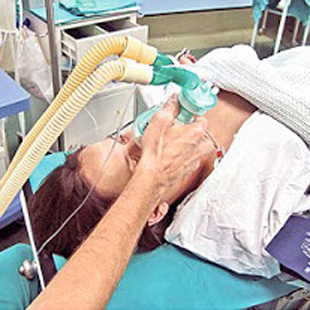Malignant Hypertermia - 2014
Malignant hyperthermia is a rare life-threatening disease that is
characterised by pathologic hypermetabolic condition at the muscle tissue level. Susceptibility to MH is often inherited as an autosomal dominant disorder and the episode is triggered by esposure to certain drugs - succinylcholine and volatile anesthetic agents. It usually occurs during general anesthesia or within the first few hours of recovery from anesthesia.
In the following algorithm you will learn how to recognise MH episode and how to deal with such situation.
Review
Malignant hyperthermia, hereinafter referred to as MH, is one of the most serious and we can also say the most insidious complication of general anesthesia. It is immediately life-threatening to the patient and MH has no specific clinical symptoms, except for the rapidly growing body temperature, which, however, may be a late sign. Educational algorithm dedicated to the issue MH brings clinical situation where it is necessary to evaluate changes in several clinical parameters in a relatively short time, to rule out other possible causes and then to lead to the correct conclusion. This serious diagnosis needs to be solved causally. The algorithm demonstrates the way to the correct resolution while pointing to solutions that may be symptomatic, although correct, but at the moment they can lead to mistake with serious consequences.
Sources
JINDROVÁ, Barbora, Martin STŘÍTESKÝ a Jan KUNSTÝŘ. Praktické postupy v anestezii. 2., přepracované a doplněné vydání. Praha: Grada Publishing, 2016. ISBN 978-80-247-5612-7.





